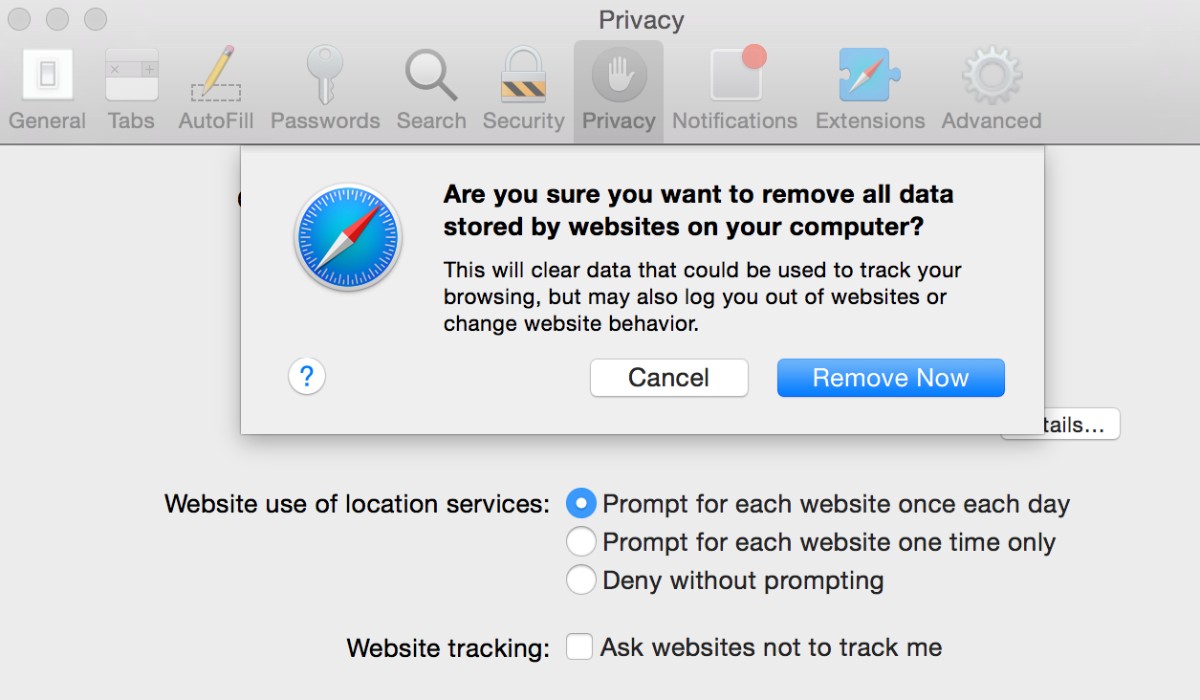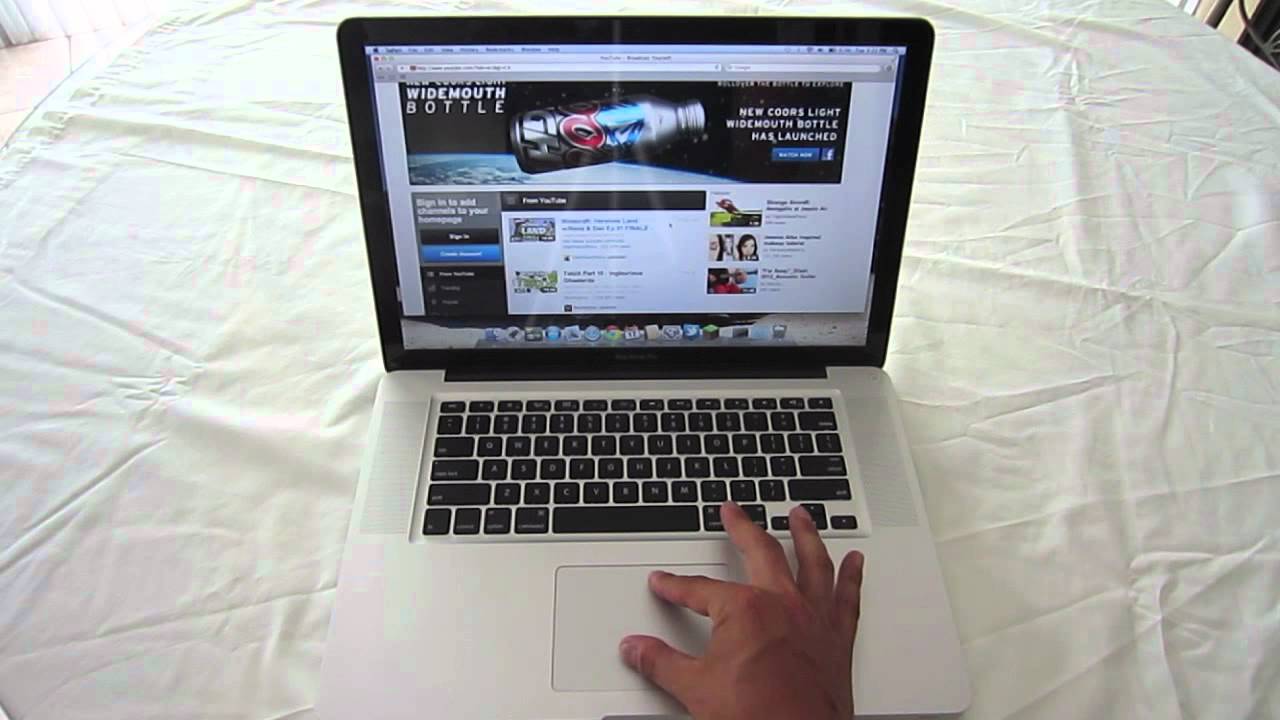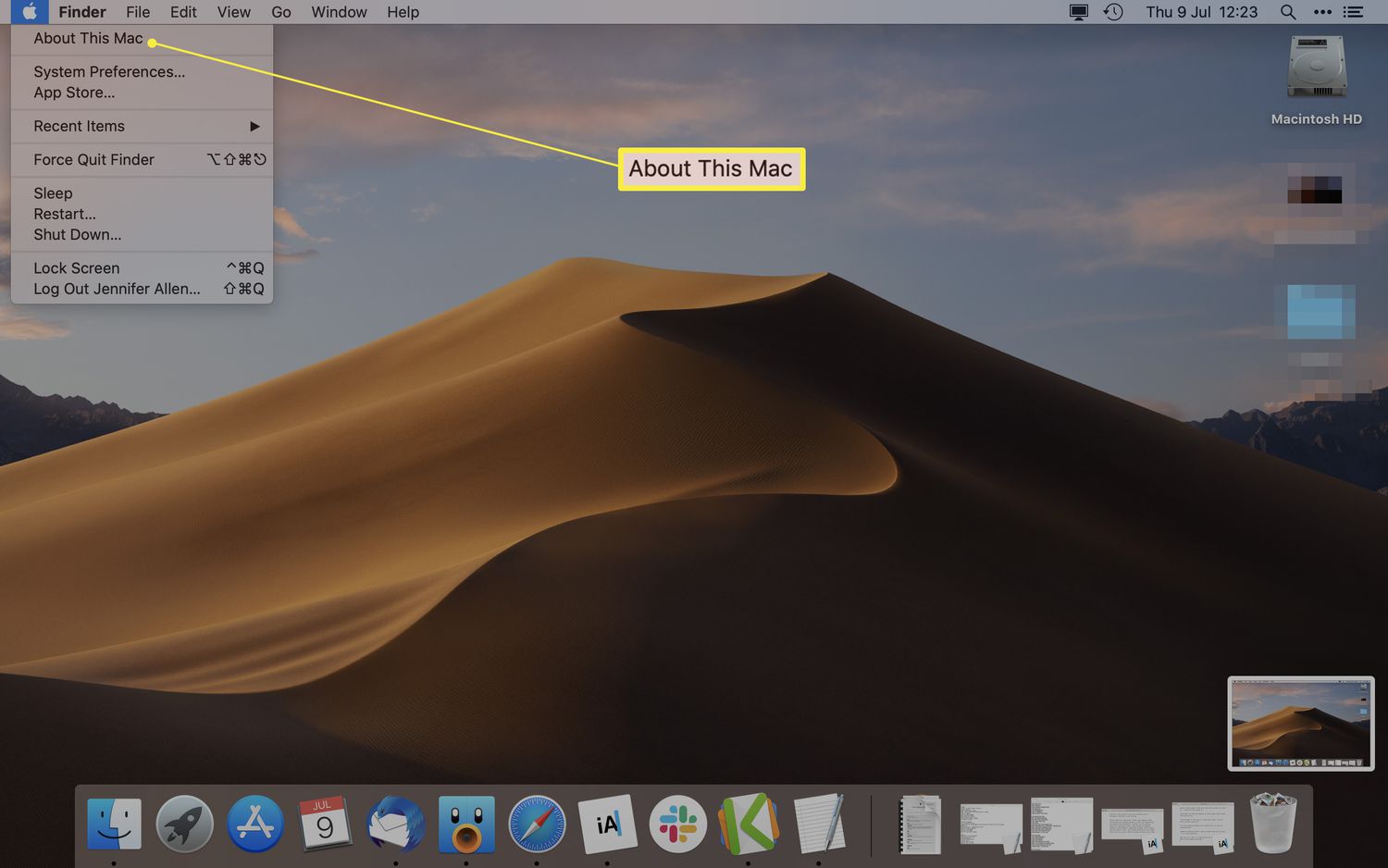Introduction
Welcome to this guide on how to force quit applications on your Macbook Pro. We all know that at times, certain applications on our computers can become unresponsive or freeze, causing frustration and hindering our productivity. Fortunately, Macbook Pro provides a solution in the form of the “Force Quit” feature, which allows you to close unresponsive applications swiftly and resume your work. In this article, we will explore different methods to force quit applications on your Macbook Pro.
The force quit function is designed to terminate applications that are no longer responsive and may be causing system issues. It can be an extremely useful tool when faced with a frozen or unresponsive application that refuses to close through regular means. By force quitting an application, you can avoid the inconvenience of restarting your computer, allowing you to quickly get back to your work without losing any unsaved data.
In this guide, we will go through various ways to force quit applications on a Macbook Pro. We will explore methods that utilize the Apple Menu, keyboard shortcuts, the Activity Monitor, and the Dock. Whether you’re a beginner or a seasoned Mac user, these methods will help you effectively deal with unresponsive applications and enhance your overall user experience.
It’s important to note that force quitting should only be done when absolutely necessary, as some applications may not have had a chance to save your work before becoming unresponsive. Therefore, it is always recommended to try closing an application normally before resorting to force quitting. With that in mind, let’s dive into the different methods of force quitting applications on your Macbook Pro.
Understanding Force Quit on Macbook Pro
Before we delve into the various methods of force quitting applications on your Macbook Pro, it’s important to have a solid understanding of what force quitting entails. Force quitting is a feature provided by macOS that allows you to forcefully close unresponsive applications that are causing issues or preventing you from using your computer effectively.
When an application becomes unresponsive, it can lock up your system, making it difficult to perform any other tasks. By force quitting the application, you essentially terminate its processes, allowing your Macbook Pro to regain stability and functionality.
Force quitting an application should be used as a last resort when all other methods of closing an application fail. It is important to note that force quitting an application can result in the loss of any unsaved data, so it’s crucial to save your work regularly in order to minimize any potential data loss.
To force quit an application, the Macbook Pro sends a command to the application requesting it to exit. If the application is unresponsive, it may not be able to acknowledge the request, and macOS will terminate the application forcefully.
It’s worth mentioning that force quitting an application doesn’t erase any of its data or settings. The next time you open the application, it should start up as normal, without any adverse effects. However, if the unresponsiveness persists, or if the application frequently requires force quitting, it may be worth investigating the cause of the issue further or contacting the application’s developer for support.
Now that we have a clear understanding of force quitting applications, let’s explore the different methods you can use to force quit applications on your Macbook Pro. Whether it’s freezing, crashing, or simply not responding, these methods will help you regain control of your computer and get back to your tasks seamlessly.
Method 1: Using the Apple Menu
One of the simplest and most convenient ways to force quit an application on your Macbook Pro is by using the Apple Menu. This method allows you to quickly access a list of running applications and force quit the one that is causing issues. Follow the steps below to force quit an application using the Apple Menu:
- Click on the Apple logo located on the top left corner of your screen. This will open a dropdown menu.
- Scroll down and select the “Force Quit” option. Alternatively, you can use the keyboard shortcut Command + Option + Esc.
- A window will appear, displaying a list of open applications.
- Select the unresponsive application that you want to force quit.
- Click on the “Force Quit” button at the bottom right corner of the window, or press the Return key on your keyboard.
After following these steps, the application will be forcefully closed, allowing you to regain control of your Macbook Pro. It’s important to note that any unsaved data within the application may be lost, so it’s always recommended to save your work regularly to minimize the risk of data loss.
Using the Apple Menu to force quit applications is a user-friendly method that can be quickly utilized, especially when you’re unsure of which specific method to use. It provides a straightforward way to terminate unresponsive applications and get your Macbook Pro back on track without the need for complex steps or additional software.
Now that you’re familiar with the process of force quitting applications using the Apple Menu, let’s explore another method that involves utilizing keyboard shortcuts on your Macbook Pro.
Method 2: Utilizing Keyboard Shortcuts
If you prefer using keyboard shortcuts, you’ll be pleased to know that Macbook Pro provides a quick and efficient method to force quit applications. By utilizing specific key combinations, you can swiftly terminate unresponsive applications without having to navigate through menus or windows. Follow the steps below to force quit an application using keyboard shortcuts:
- Press and hold the Command + Option + Esc keys simultaneously. This will instantly bring up the Force Quit Applications window.
- In the Force Quit Applications window, you will see a list of running applications.
- Select the unresponsive application that you wish to force quit.
- Click on the “Force Quit” button or press the Return key on your keyboard to terminate the selected application.
Keyboard shortcuts provide a convenient and efficient way to force quit applications, especially when you’re dealing with a frozen or unresponsive application that prevents you from using your mouse or trackpad. By memorizing and using the Command + Option + Esc shortcut, you can quickly regain control of your Macbook Pro and continue your work.
It’s important to note that when using keyboard shortcuts to force quit applications, the selected application will be terminated immediately. Any unsaved data within the application may be lost, so it’s crucial to save your work regularly to minimize the risk of data loss.
Now that you know how to force quit applications using keyboard shortcuts, let’s move on to another method that involves using the Activity Monitor on your Macbook Pro.
Method 3: Using the Activity Monitor
The Activity Monitor is a built-in utility on Macbook Pro that provides a detailed overview of all the processes running on your computer. It can be a powerful tool when it comes to force quitting applications, as it allows you to identify and terminate specific processes that may be causing issues. Follow the steps below to force quit an application using the Activity Monitor:
- Open the Activity Monitor by navigating to Applications > Utilities > Activity Monitor, or by searching for it using Spotlight.
- In the Activity Monitor window, you’ll see a list of all the processes running on your Macbook Pro.
- Locate the application that is unresponsive or causing issues.
- Click on the application to select it, and then click on the “X” button located at the top left corner of the window.
- A confirmation dialog box will appear. Click on the “Force Quit” button to terminate the selected application.
The Activity Monitor gives you a comprehensive view of all the processes on your Macbook Pro, allowing you to pinpoint and terminate specific applications that are causing problems. This method can be particularly useful when you’re dealing with a specific process that is hogging system resources or causing your computer to slow down.
However, it’s important to exercise caution when using the Activity Monitor to force quit applications. Terminating certain processes may have unintended consequences and could potentially affect the stability and functionality of your Macbook Pro. Therefore, it’s recommended to only force quit processes that you are familiar with or that you suspect are directly related to the unresponsive application.
Now that you’re familiar with using the Activity Monitor to force quit applications, let’s explore another method that involves force quitting applications directly from the Dock on your Macbook Pro.
Method 4: Force Quit Applications from the Dock
Force quitting applications directly from the Dock is another convenient way to terminate unresponsive apps on your Macbook Pro. This method allows you to quickly access and force quit applications that are causing issues or refusing to close through regular means. Follow the steps below to force quit an application from the Dock:
- Locate the application icon in the Dock that you want to force quit.
- Press and hold the Option key on your keyboard.
- The icons in the Dock will start to wiggle, indicating that they are now editable.
- Click on the unresponsive application’s icon, and an options menu will appear above it.
- In the options menu, click on the “Force Quit” option to terminate the selected application.
Force quitting applications from the Dock provides a quick and straightforward method to close unresponsive apps without the need to navigate through menus or windows. This method is especially useful when you frequently use certain applications that tend to become unresponsive, allowing you to resolve the issue promptly and continue your work.
It’s important to note that when force quitting an application from the Dock, any unsaved data within the application may be lost. Therefore, it’s always recommended to save your work regularly to minimize the risk of data loss.
By now, you should be equipped with multiple methods to force quit applications on your Macbook Pro. Whether you prefer using the Apple Menu, keyboard shortcuts, the Activity Monitor, or the Dock, these methods offer flexibility and convenience when dealing with unresponsive or problematic applications.
In the next section, we will wrap up our exploration of force quitting applications on a Macbook Pro and provide some final thoughts and recommendations.
Conclusion
In this guide, we explored various methods to force quit applications on your Macbook Pro. From using the Apple Menu to utilizing keyboard shortcuts, the Activity Monitor, and the Dock, each method offers its own advantages and can be used depending on your preference and the situation at hand.
Force quitting applications can be a valuable tool when faced with unresponsive or problematic apps that hinder your productivity. It allows you to quickly terminate these applications without the need for a system restart, helping you get back to work efficiently.
While force quitting applications is a useful solution, it’s important to remember that it should only be done when necessary. Force quitting an application can result in the loss of any unsaved data, so it’s always advisable to save your work regularly and try closing an application normally before resorting to force quitting.
Additionally, if you find yourself frequently needing to force quit the same application or experiencing persistent issues with multiple applications, it may be worth investigating the underlying cause further or seeking support from the application’s developer.
By familiarizing yourself with the different methods of force quitting applications on your Macbook Pro, you can effectively manage unresponsive apps and maintain a smooth and productive computing experience.
Remember to use these force quitting methods responsibly and only force quit applications when necessary. With these techniques in your arsenal, you can confidently tackle any unresponsive applications and keep your Macbook Pro running smoothly.
We hope this guide has been helpful in providing you with the knowledge and tools to force quit applications on your Macbook Pro. Happy computing!

























